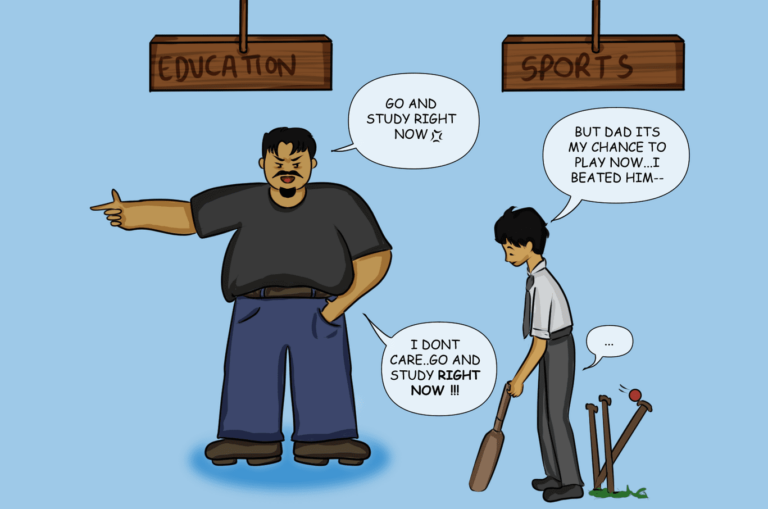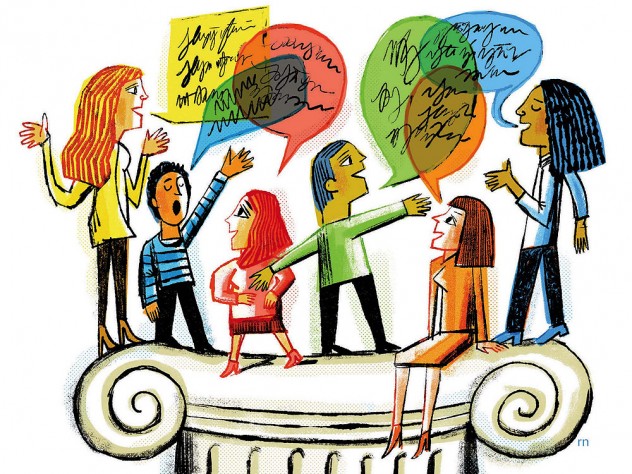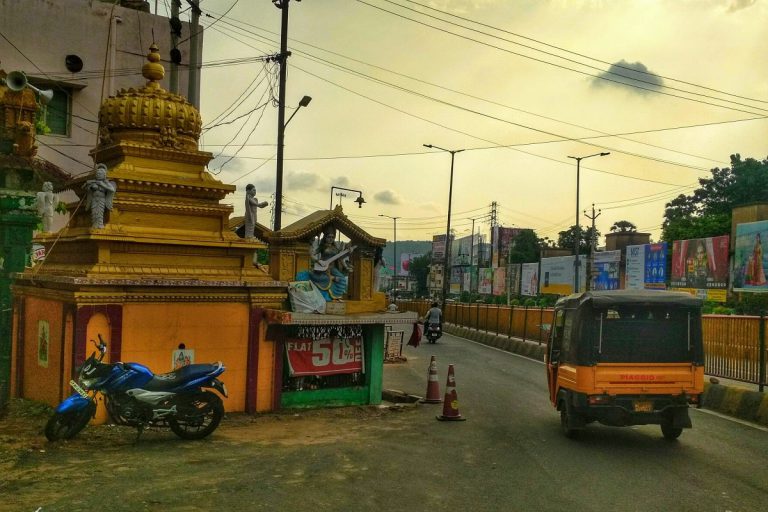Songs of Resistance: Ambedkari Jalsa
Sagarika is an undergraduate student pursuing a major in English and a minor in Political Science from St. Stephen's College, Delhi.
“In the dark times will there also be singing? Yes, there will also be singing, about the dark times”
Now, more than ever, creativity and culture are being pushed into the political realm as a form of resistance. Art has always had a great function as a political witness and as a revolutionary force, but in recent times, a cultural revolution is not seen as something different from ‘actual’ revolution rather an extension of it, and a way to mobilise the masses into action. Art and politics, inevitably, are not merely occasionally interrelated, rather, recent times have shown us how their coexistence is imperative.
Resistance, for a long time, was seen as something that existed outside the realm of aesthetics, and art in very conventional forms was what channelled dissent into the mainstream, like the poetry by Langston Hughes or Ginsberg, or Faiz, closer home. Guru Dutt’s Pyaasa very subtly injects this thought into our minds when his poems get rejected by a newspaper for being “too political” as opposed to being about beautiful things like nature and romance. The same thing might hold for art forms like street theatre, something that also led to the tragic and untimely demise of Safdar Hashmi.
However, in an interesting, and slightly fortunate turn of events, every art form right from music to comic strips, to dance and graffiti and even digital stickers has found a place for itself in political discourse, and Ambedkar’s politics has found an extremely prominent voice in this creative overturn.
Using a platform like Instagram, artists like Siddhesh Gautam (@bakeryprasad) and Rahee Punyashloka (@artedkar) have become household names in mainstream conversations. Their art is telling of their devotion to Ambedkar’s politics and their dedication to finding, or rather, ensuring caste equality in mainstream Indian society. When resistance is brought into the mainstream by artists like them, conversations open up and the disparity comes into focus, which is the first step towards change.
However, another art form that speaks of Ambedkar’s politics and preaches his vision, but hasn’t been given its due, is that of the Ambedkari Jalsa. The jalsa tradition uses folks songs that mark the beginning of identity, self-respect and power struggle in the Dalit political discourse. It helps them highlight the fight for equity through music, and use their songs for something other than mere entertainment.
The various discourses by Yogesh Maitreya on the jalsa tradition speak of how in the verses of these songs, you can hear the history of India’s anti-caste movement. The allure of these songs comes from the fact that the people to which Babasaheb’s discourse belonged, were primarily unschooled. They respected and adored his ideas to emancipate them and annihilate the caste structures. Still, it was difficult for them to read and learn due to the oppressive Brahmanical ethos that prevailed in all institutions and forced them to remain deprived of education which is a basic human right, if not a necessity.
While the Dalits would listen to his speeches with utmost concentration, they found it difficult to break free from old habits, because as has been previously established, the oppressive structures that were extremely prevalent in society had kept them subservient and destroyed their potential over the years. Thus began the tradition of the jalsa, which was a pioneering attempt to fix Dr Ambedkar in the popular imagination and culture of the people. Stemming from the mind of Bhimrao Kardak, it is a culture against caste, and this foundation subsequently brought with it other musical genres, namely Bheem Geete, Vidrohi Jalsa and Ambedkari Shahiri.
As has been mentioned through the experiences of most Dalit writers who are producing scholarships on the art form, the Ambedkari jalsa tradition has been around for a long time but has recently gained popularity in documentation. Quoting from one of Maitreya’s articles,
“Each month and on special days such as Dr BR Ambedkar’s birth and death anniversaries, a troupe of old men from the basti would sing bhajans through the night at a Buddha vihara, a few metres from my home. Their energy was enchanting, and the two words that recurred most frequently in their songs were ‘Babasaheb’ and ‘Buddha’. It was almost like in these songs, they found a sense of belonging.”
The jalsas are the songs of the Dalits, which have the potential to usher in change and a revolution, which explains why some of their songs are sabotaged because regardless of who holds power in the country, the Savarna ethos has consistently been upheld in Indian policies and governance. These songs attempt to educate the oppressed classes against the Brahmanical dominance and thus, threaten the power of the upper castes.
These songs are not just powerful, their words are extremely volatile. You can light a match with Shantanu Kamble’s words alone, as the Dalits in Maharashtra sing in unison, “Dalita re Halla Bol Na, Shamika re Halla Bol na”, which translates into, “Oh Dalits, storm the citadel, Oh workers, storm the citadel” Sachin Mali, while in jail also wrote inciting songs “Even if you destroy the body, the conscience won’t be destroyed. You, contractors of religion, how will you cease progress?”
These songs not only impact the Dalits radically, but they also impact them rationally, which was the very purpose of the jalsa tradition. They are lethal to discriminatory forces because the idea of these songs, the words emerge from the intent and a need for an egalitarian society. The jalsa, was essential, a radically changed form of the tamasha, renamed so because of the malpractices that came with the tamasha tradition. One major criticism of the jalsa tradition is that it excluded women’s participation. However, this was because the portrayal of Dalit women in tamashas had a history of their sexual exploitation by upper castes and this was an emancipatory step towards it. Ambedkar’s understanding of the crucial role that women played in society was much more progressive for his time. In fact, he was a champion feminist.
Therefore, when the tradition did inculcate a sense of belonging in Dalit women, as well, they participated on a large scale and through their songs, these women not only decentralized the Ambedkarite ideology and movement, from being something academic and literary to introducing it to the masses and making it a part of the everyday lives but also continued Ambedkar’s cause of women participating in and pioneering the movement against the caste.
After his death, Dalit women created a ‘cultural landscape’ in the movement through their Buddha Mahila Mandal and gaayan parties, whom Gopal Guru refers to as ‘mud-house activist’, composing songs rich in political content, influenced by Ambedkar’s struggle in his personal life and the political domains. These songs were labelled as palanas, the cradle songs which are either sung as lullabies or during the birthdays of kids and ovi, which are sung by women when they are engaged in daily chores. These songs served to instil the qualities of a hero in a child, as well as acquainted them, and others, with the Ambedkarite ideologies and works. In some songs, we also see the tussle between Gandhi and Ambedkar being highlighted due to their differing views on caste structures and emancipation.
In recent times, too, the jalsa tradition has gone on to fix Dr Ambedkar’s ideas in the popular imagination. Rapper Duleshwar Tandi, better known as Dule Rocker, goes on to say that “my music isn’t to please you, it is not for your parties and dancing” but his music does have a larger social and political purpose, because his first full-length album, titled Annihilation of Caste, made groundbreaking news with the way it spoke of the migrant crisis during the lockdown and caste-based atrocities that continue to plague society today. Besides them, we also see rappers like Naveen Koomar and music by the Republican Panthers, who through the internet, have found a platform to have their voices be heard. Added to these are also rappers like Raja Kumari and DIVINE, who have brought out songs against caste structures.
Madhur Shinde’s Jay Bhim has also made some rounds for the same reason, and even in protests, people can be seen singing these songs of revolution in unison. Women have also taken to the songs of protest, as can be seen by Sheetal Saathe’s bold speech where she says that she will not stop singing even as the establishment tries to oppress her, right before she pays tribute to Late Rohith Vermula, a Dalit student and a Marxist-Ambedkarite activist.
We thus see how firmly rooted the jalsa tradition is in the Ambedkarite political discourse. The jalsa might not be unique to him, as even the Satyashodhaki Jalsa was created to convey the ideas of Mahatma Phule’s Satyashodhak Movement, much like the Mahar Satyagraha with Ambedkar. However, the jalsa tradition today is being popularised as a form of protest and a tool to spread anti-caste awareness which is what the shahiris, jalsas and tamashas aimed to do.
Perhaps this is why Dr Ambedkar has said that ten of his speeches are equal to one jalsa by Bhimrao Kardak because art can be used to powerfully impact people. As Sathe has said,
“Jag badal ghaluni ghav, Sangun gele maj Bhimrao”
Change the world with an attack, Thus, said Bhimrao.
Works cited:
- Maitreya, Y. (2018, May 3). Dalit Shahirs of Maharashtra: Bhimrao Kardak’s Jalsa Against Caste. Firstpost, Retrieved January 5, 2022. From: https://www.firstpost.com/long-reads/dalit-shahirs-of-maharashtra-bhimrao-kardaks-jalsa-against-caste-4479325.html
- Garud, P. (2017, May 25) Ambedkari Jalsa: My grandfather’s legacy. The Breakthrough Voice, Retrieved January 3, 2022. From: https://inbreakthrough.org/ambedkari-jalsa-grandfathers-legacy/
- Maitreya, Y. (2018, June 9). In the Words of Dalit Shahirs. Scroll, Retrieved January 5, 2022. From: https://scroll.in/magazine/878456/in-the-verses-of-dalit-shahirs-you-can-hear-the-history-of-indias-anti-caste-movement
- Sharmila Rege. (1998). Dalit Women Talk Differently: A Critique of “Difference” and Towards a Dalit Feminist Standpoint Position. Economic and Political Weekly, 33(44), WS39–WS46. http://www.jstor.org/stable/440732
- Mishra, A. (2021, July 4) Annihilation of Caste: Kalahandi rapper Dule Rocker plans album ‘to take forward Ambedkar’s legacy’ Scroll, Retrieved January 6, 2022. From: https://scroll.in/article/999218/annihilation-of-caste-kalahandi-rapper-dule-rocker-plans-album-to-take-forward-ambedkars-legacy








